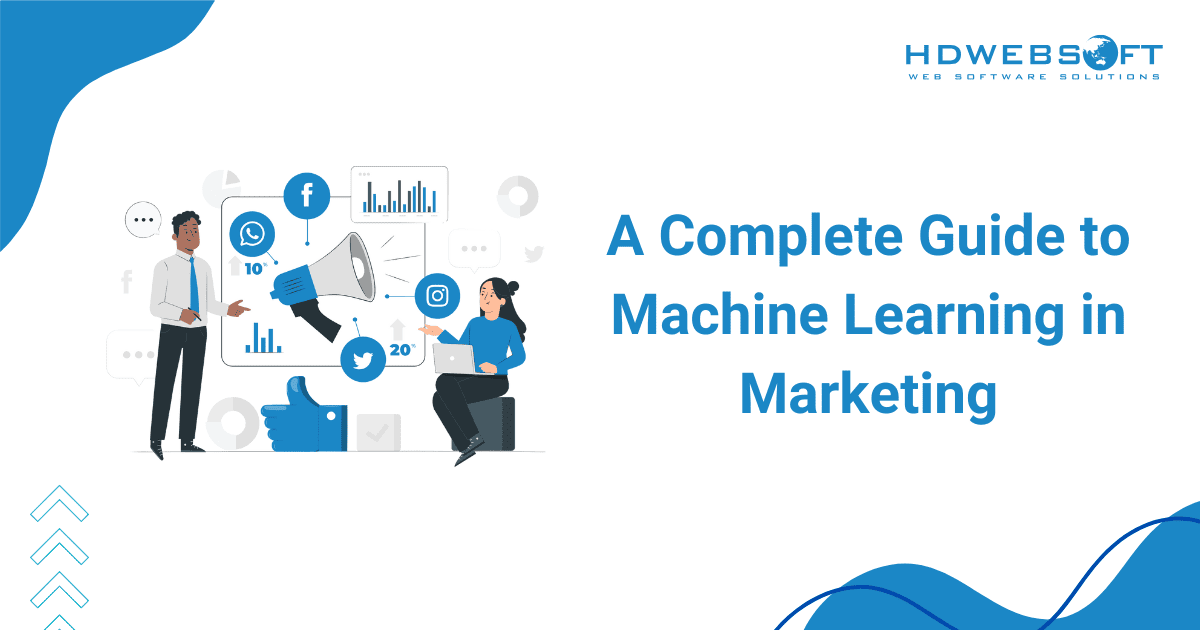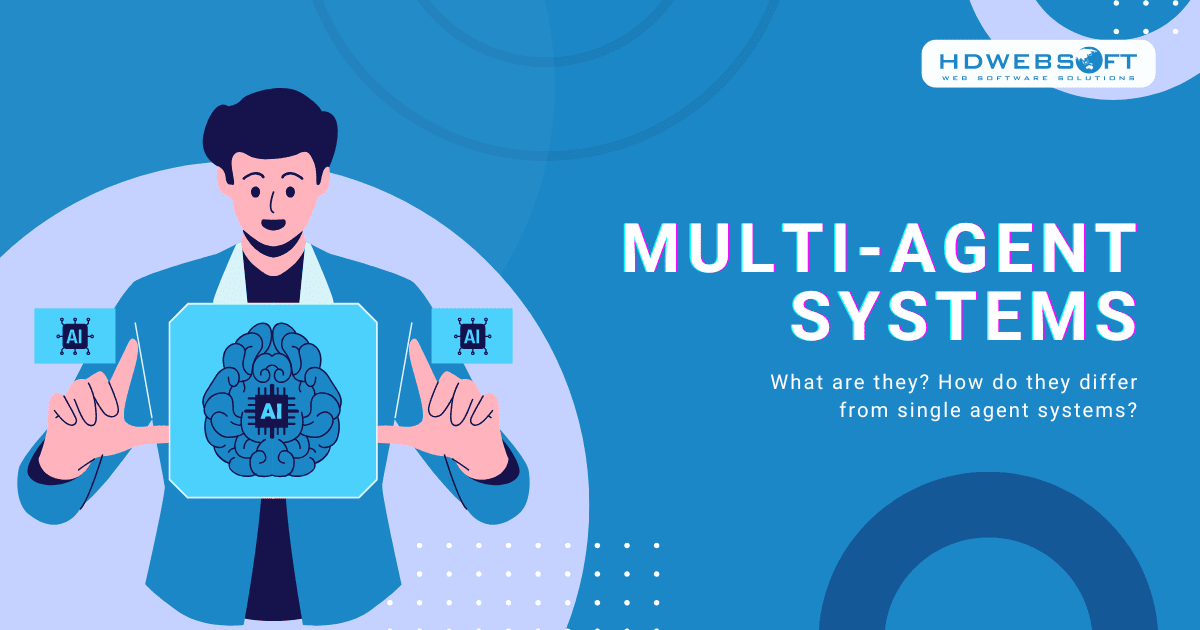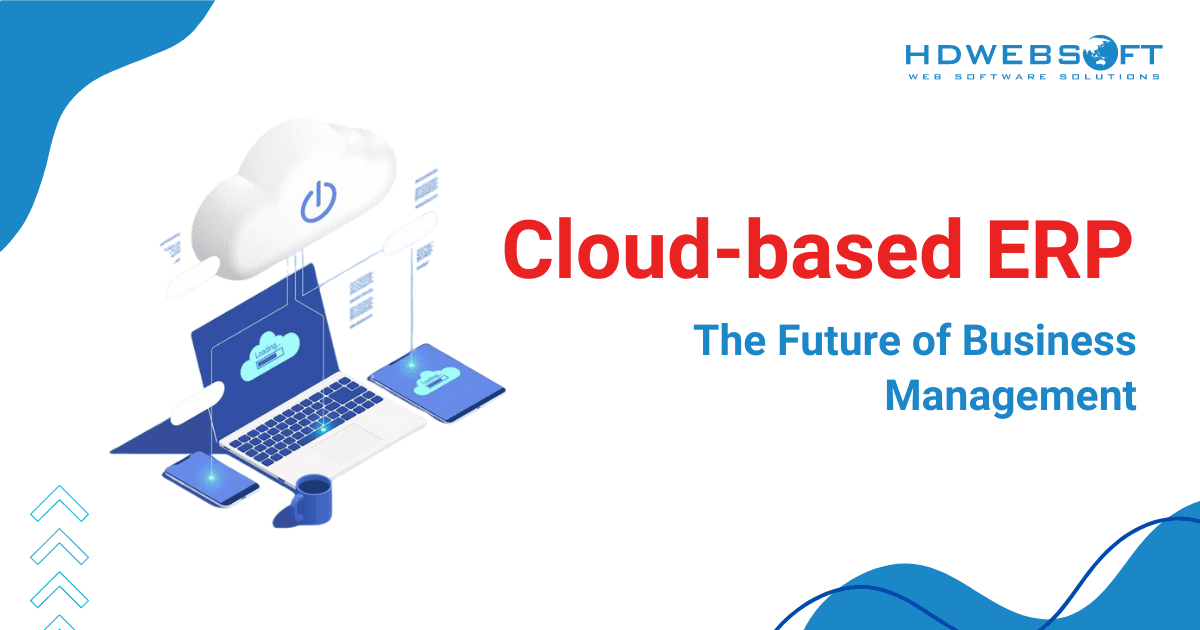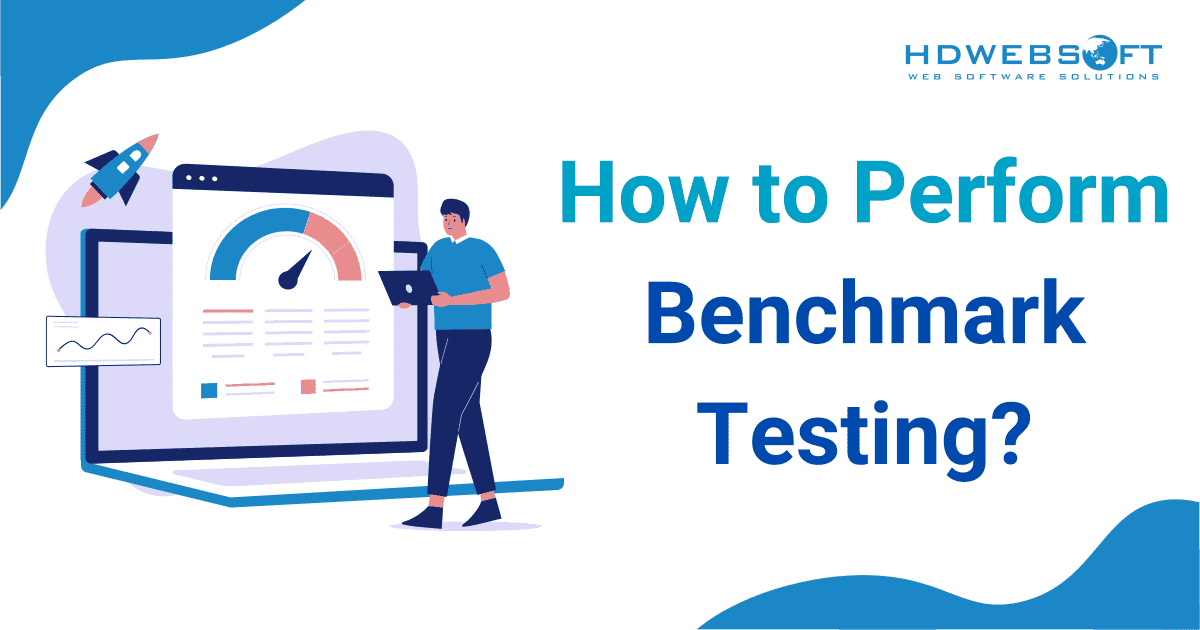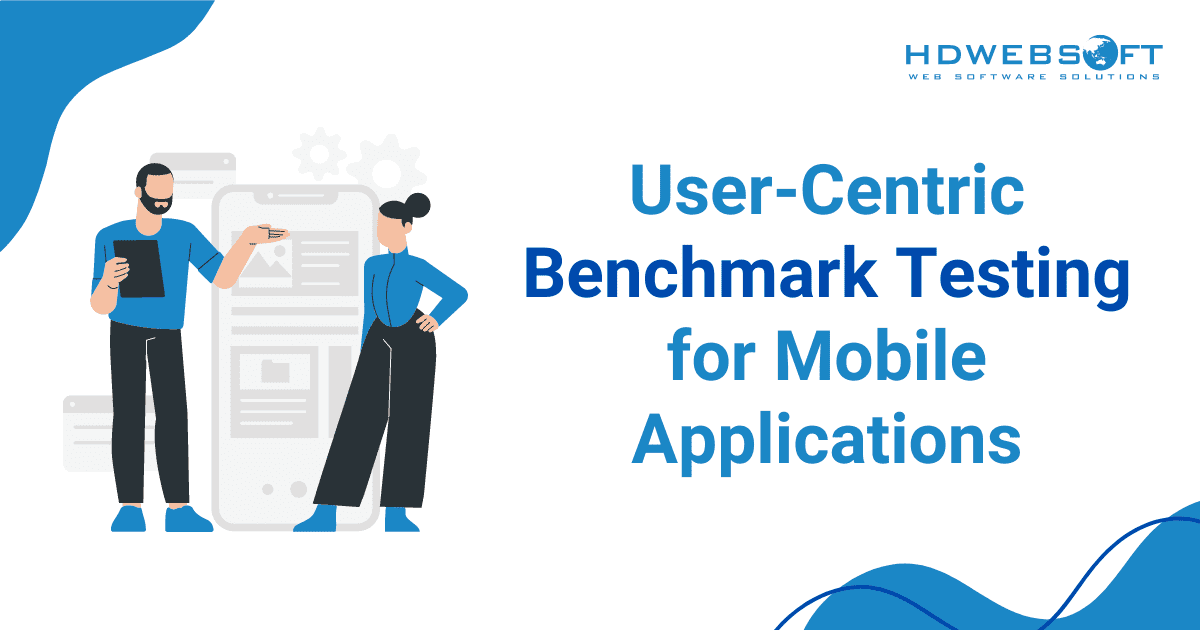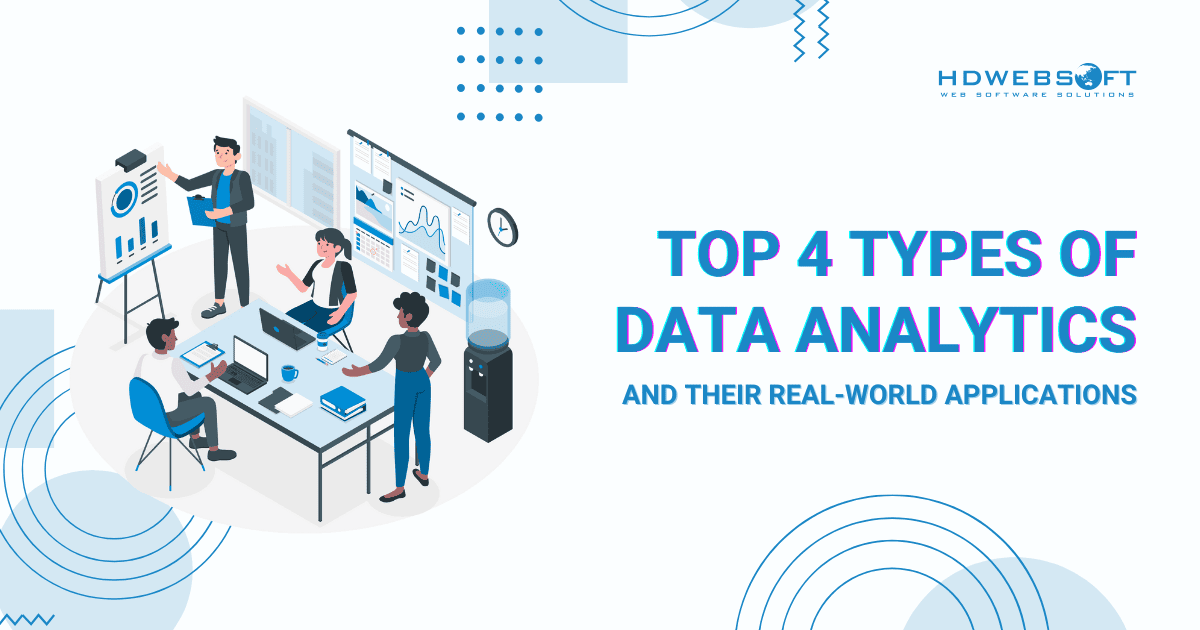
4 Types of Data Analytics and Their Applications
In today’s fast-paced digital world, data isn’t just information; it’s the lifeblood of smart decision-making. Businesses that harness their data effectively gain a significant competitive edge. This is precisely where understanding the different types of data analytics becomes crucial. From understanding past events to predicting future outcomes and even prescribing optimal actions, data analytics offers a roadmap for strategic growth.
Let’s dive into these essential categories, exploring how each one builds upon the last, delivering increasingly valuable insights.
What Are The 4 Types Of Data Analytics?
There are 4 types of data analytics, starting from the simplest and progressing to more advanced forms. Typically, as the complexity of the analysis increases, so does the value it delivers.
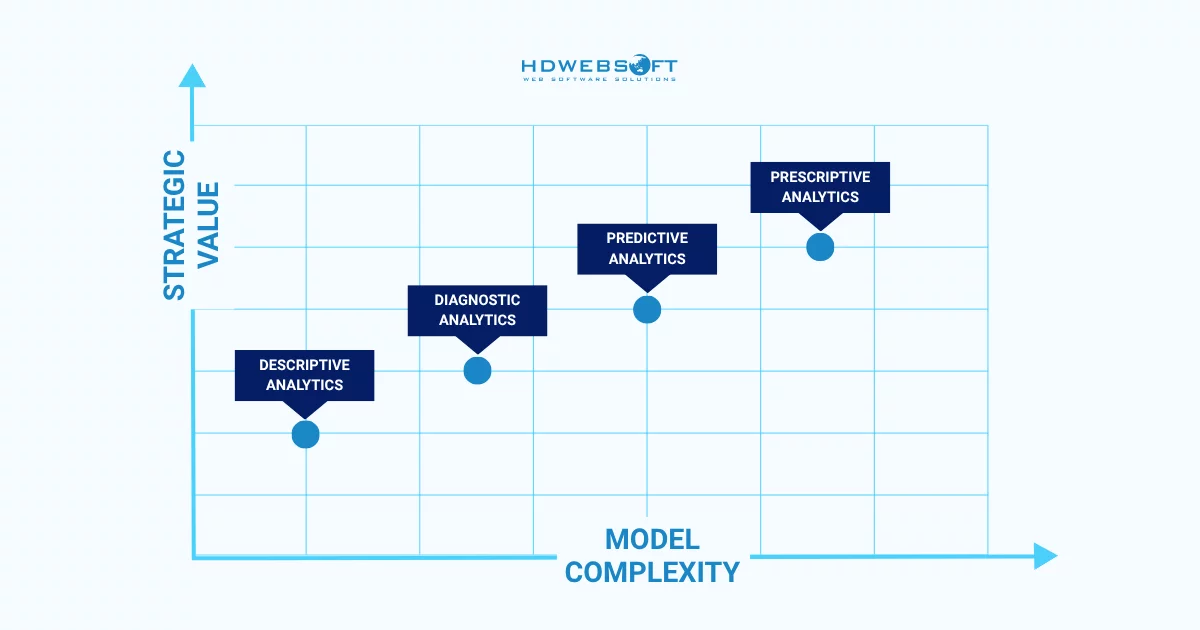
Descriptive Analytics: Understanding “What Happened?”
First of all, descriptive analytics forms the foundational layer of any data analysis journey. Its primary goal is to summarize and describe past data, providing a clear picture of historical events. Think of it as looking in the rearview mirror to understand the journey taken.
How it works
This type of analytics collects, organizes, and aggregates raw data from various sources. It then transforms this data into digestible formats, such as reports, dashboards, and visualizations. Key performance indicators (KPIs), trends over time, and basic summaries are common outputs.
Examples in action
- A retail company analyzes last quarter’s sales figures to identify top-selling products.
- A marketing team tracks website traffic and conversion rates over the past month.
- A manufacturer reviews production volumes and defect rates from the previous year.
- Healthcare providers assess patient demographics and common diagnoses from electronic health records.
Why it matters
These types of data analytics provide essential context. This is because they answer fundamental questions about business performance, customer behavior, and operational efficiency. Without this initial understanding, deeper analysis would be impossible. Hence, they help identify patterns and anomalies that warrant further investigation.
Moreover, they’re often the most accessible starting point for organizations beginning their data journey, offering immediate insights without the need for complex algorithms.
Diagnostic Analytics: Uncovering “Why Did It Happen?”
Once you know “what happened” through descriptive analytics, the natural next step is to understand “why it happened.” This is the realm of diagnostic analytics. It delves deeper into the data, seeking to identify the root causes of events or trends.
The working mechanism
Diagnostic analytics employs techniques like drill-downs, data discovery, data mining, and correlation to explore relationships between variables. It seeks to pinpoint factors contributing to a particular outcome, whether positive or negative.
For instance, if sales dropped in a specific region, these types of data analytics would explore contributing factors. Namely, they may include marketing campaign changes, competitor activities, or supply chain issues.
Practical use cases
- A software company analyzes data to understand the underlying reasons for a sudden spike in customer churn. Perhaps it’s a recent product update or a competitor’s new offering.
- An e-commerce business analyzes why a specific product’s conversion rate has declined, examining website changes, pricing strategies, or customer reviews.
- A logistics firm investigates why delivery times have increased in certain areas. Potentially, it may be linking this to traffic patterns or fleet maintenance issues.
- Human resources departments analyze employee turnover rates to understand factors such as compensation, management styles, and training opportunities.
The importance
In essence, diagnosis analytics empowers businesses to move beyond simply observing problems to actually understanding and addressing them. By identifying root causes, organizations can develop targeted solutions and prevent recurring issues.
Overall, these types of data analytics are about gaining actionable insights that inform corrective measures and improve future performance. Therefore, this step is critical for continuous improvement and operational optimization.
Predictive Analytics: Forecasting “What Will Happen?”
Building on the insights from descriptive and diagnostic analytics, predictive analytics focuses on forecasting future outcomes and trends. It uses historical data and statistical models to make educated guesses about what’s likely to occur. This is where data truly becomes forward-looking.
Mechanics of operation
Now, predictive analytics leverages various statistical techniques, machine learning algorithms, and artificial intelligence. These prediction models identify patterns and relationships in past data and apply them to new data to predict future probabilities.
In particular, common methods include regression analysis, time series forecasting, neural networks, and decision trees. The accuracy of these types of data analytics predictions depends heavily on the quality and volume of the historical data, as well as the sophistication of the models used.
Hand-on examples
- A financial institution predicts loan default risks based on applicant credit history and economic indicators.
- Retailers forecast future sales demand for specific products to optimize inventory management.
- Marketing teams are predicting which customers are most likely to respond to a new campaign or churn.
- Healthcare systems are predicting patient readmission rates or the likelihood of disease outbreaks.
- Maintenance teams predict equipment failure to schedule proactive repairs, minimizing downtime.
Key benefits
The types of analytics enable businesses to anticipate future scenarios, allowing for proactive decision-making. It helps in risk mitigation, resource allocation, and identifying new opportunities. Thus, the ability to forecast customer behavior, market shifts, or operational challenges gives organizations a significant strategic advantage.
Ultimately, it’s moving them from reactive to proactive strategies. Businesses can use these types of data analytics to plan more effectively and respond to opportunities faster.
Prescriptive Analytics: Advising “What Should Be Done?”
Lastly, we have prescriptive analytics as the most advanced and sophisticated form of data analytics. It not only predicts what will happen but also recommends specific actions to achieve desired outcomes or mitigate potential risks. This is about providing direct, actionable advice.
Operational details
This level of analytics integrates findings from descriptive, diagnostic, and predictive models with optimization and simulation techniques. It uses complex algorithms, machine learning, and often AI to weigh various options, considering constraints and objectives, to determine the best course of action. Furthermore, it can even quantify the implications of each potential decision, guiding users toward optimal choices.
In practice
- Supply chain management systems recommend optimal routing for deliveries to minimize costs and maximize efficiency. They take into account real-time traffic and weather conditions.
- Pricing engines dynamically adjust product prices based on demand forecasts, competitor pricing, and inventory levels.
- Financial trading platforms offer investment strategies designed to maximize returns while mitigating risk.
- Healthcare systems recommend personalized treatment plans for patients based on their specific health data and predicted responses to therapies.
- Customer service platforms suggest the next best action for an agent to take during a customer interaction.
What makes it important
In fact, these types of data analytics move beyond merely understanding data to actively guiding strategic and operational decisions. It helps organizations make truly data-driven choices. As a result, optimized performance, increased efficiency, and significant competitive advantages are achieved.
While it requires substantial data infrastructure and analytical expertise, the ROI can be immense. It transforms data into direct, actionable intelligence.
Comparison Between 4 Types of Data Analytics
How AI is Used in Data Analytics
The rapid evolution of AI and ML has profoundly influenced many business domains, and data analytics is no exception. Today, organizations seek more intelligent, adaptive systems to draw insights from increasingly large and complex datasets.
A recent report reveals that 63% of data and analytics professionals believe AI/ML integration helps them make decisions faster and more effectively. This trend demonstrates how AI can fundamentally transform the traditional types of data analytics.
Whether it’s uncovering historical trends or recommending optimized decisions, AI is driving efficiency and innovation across the board. Let’s explore how these technologies are being applied to improve the accuracy and scalability in business.
Streamlining Data Preparation
Before any insight can be generated, raw data must be cleaned, transformed, and made analysis-ready. This is a critical step across all data analytics types. Without quality data, even the most advanced models can produce misleading results.
AI helps by automating this preparation process. It can detect and fix missing values, spot outliers, remove duplicates, and normalize inconsistent formats across multiple sources. Additionally, these tools also extract structured data from unstructured content like PDFs or handwritten notes.
By improving data readiness, AI ensures every type of analysis is built on accurate foundations. Whether you’re measuring past performance or simulating future outcomes, AI-supported data prep significantly boosts the reliability of all types of data analytics.
Empowering Predictive and Prescriptive
Advanced data analytics types, such as predictive and prescriptive analytics, benefit greatly from recent progress in Generative AI. Predictive models forecast what’s likely to happen, while prescriptive models recommend the best course of action based on that prediction.
GenAI enhances these models by identifying deeper, nonlinear patterns in large datasets, something traditional tools often miss. It also enables simulations with thousands of variables, offering a wider view of possible outcomes in less time.
Another major advantage is synthetic data generation. When real-world data is limited or imbalanced, GenAI can create realistic datasets for training. Thus, this opens up possibilities for developing models in new or sensitive domains where collecting data is difficult.
Further reading: Top 5 Best Practices for GenAI Consulting.
Making Data Analytics Accessible to Everyone
Today’s BI tools often come with natural language features, making it easier for non-technical users to access insights. Instead of writing queries, users can type what they need, such as “monthly sales by region,” and receive results in a chart, table, or text.
This approach helps remove barriers to using different types of data analytics. People without coding or SQL skills can still explore data, speeding up decisions and encouraging broader adoption across teams.
The Evolving Landscape of Data Analytics in 2026
While the four fundamental data analytics types remain the backbone, the field is continuously evolving. It’s driven by technological advancements and increasing data volumes. Several key trends are shaping how businesses approach data analytics in 2026:
AI and Machine Learning Integration
Artificial intelligence and machine learning are no longer just supporting players; they are central to modern data analytics. They automate data preparation, enhance predictive model accuracy, and enable more sophisticated prescriptive solutions.
Nowadays, AI-powered tools are democratizing analytics, making complex insights more accessible through natural language interfaces. This enables more users across an organization to ask questions and obtain answers from data without requiring advanced technical skills.
Real-time Analytics and Edge Computing
The demand for immediate insights is booming. Among the evolving types of data analytics, real-time analytics, often powered by edge computing, has become essential. By processing data closer to its source, such as IoT devices, businesses can react instantly and make time-sensitive decisions with confidence.
Particularly, this is crucial for applications like fraud detection, personalized customer experiences, and optimizing manufacturing processes on the fly. It reduces latency and allows for faster responses to dynamic environments.
Data Fabric and Data Mesh Architectures
Managing vast and disparate data sources is a huge challenge. Data fabric and data mesh architectures are gaining prominence as solutions.
On one hand, data fabric creates a unified, intelligent layer over distributed data, facilitating seamless data access and integration. Data mesh, on the other hand, decentralizes data ownership, treating data as a product. Both aim to simplify data access and improve scalability, directly enhancing the effectiveness of all types of data analytics.
Augmented Analytics
Next, augmented analytics leverages AI and machine learning to automate aspects of data preparation, insight generation, and insight explanation. It guides users through the analysis process, suggesting relevant findings and data visualizations.
This empowers business users who may not be data scientists to derive meaningful insights. Consequently, it accelerates decision cycles and makes analytics more broadly accessible within an organization.
Emphasis on Data Governance, Security, and Ethics
Last but not least, with increasing data usage comes greater responsibility. Robust data governance frameworks, stringent security measures, and ethical considerations are paramount.
Hence, compliance with regulations like GDPR and CCPA, along with strong data privacy practices, has become essential in modern analytics. These are no longer afterthoughts but critical pillars of a successful strategy.
Guidelines like the Asilomar AI Principles also highlight the importance of responsible AI usage. They are pushing organizations to prioritize ethical standards in how they collect, analyze, and apply data. After all, trust in data is fundamental to its value.
Building Your Data Analytics Journey
Every organization is at a different stage in its data analytics journey. Understanding the types of data analytics helps you assess your current capabilities and define your future needs. You might start with strong descriptive foundations, then gradually build towards diagnostic, predictive, and ultimately prescriptive power.
Implementing advanced analytics often requires significant investment in cutting-edge technology, skilled data professionals, and fostering a truly data-driven culture throughout the organization. Partnering with a skilled data analytics provider helps businesses navigate complexity, maximize ROI, and unlock the true value of their data. HDWEBSOFT supports this by turning raw information into actionable insights that drive innovation and ensure sustainable growth into 2026 and beyond.











